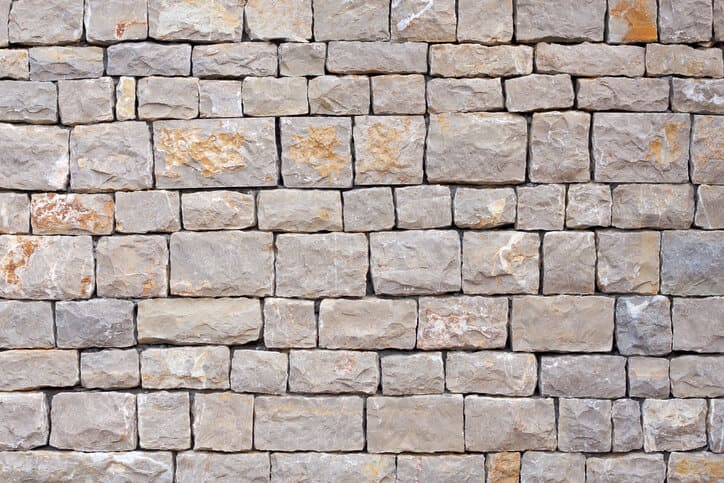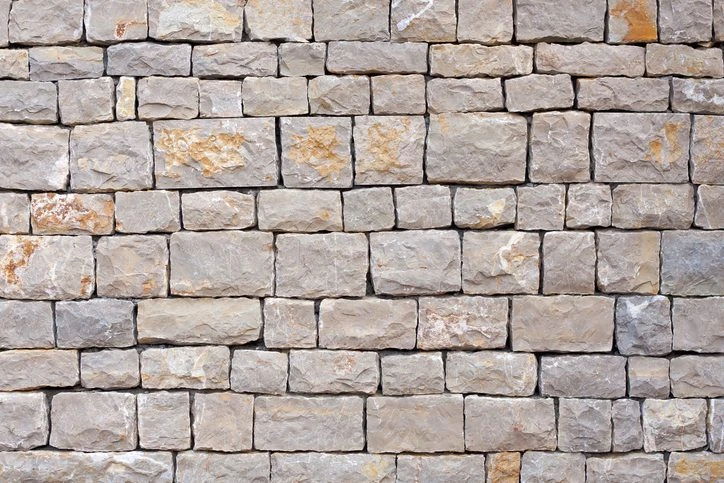Dry stack stone walls are attractive, easy-to-build, landscape features that make a wonderful addition to residential and commercial properties.
If you’re wondering how to build a dry stack stone wall, this blog post will teach you how to construct one and will also answer some of the frequently asked questions that our rock wall builders often hear.
Continue reading to learn how to build a dry stack stone wall or give New Life Rockeries a call to request an estimate for having a retaining wall contractor build your wall for you.

How To Build a Dry Stack Stone Wall: 6 Steps
When it comes to how to build a stacked stone wall, our retaining wall experts have put together a simple, six-step tutorial for building your very own dry stack stone wall.
If you have any questions about the steps listed below or how to build a rock retaining wall, give our team at New Life Rockeries a call today.
- Choose your stone and gather the necessary tools and materials.
- Dig your trench (a stacked stone wall generally requires a trench that is between four and six inches deep, by two-feet wide).
- Shovel and tamp the dirt to create a solid foundation for your dry stack wall.
- Lay your foundational layer and continue to place layers on top of each other until your wall is the ideal height (most are between two and a half to three feet tall).
- Finish off your stacked rock retaining wall with a capstone, making sure that it’s level.
- Fill any gaps in the wall with smaller stones and voila! Your stacked stone retaining wall is complete.
Tips For Building a Stackable Stone Retaining Wall
Here are four tips for building a stackable stone retaining wall that lasts:
- Watch several YouTube tutorials about how to build a stacked rock wall prior to beginning your project.
- Make sure that you have all of the necessary tools and materials for constructing your dry stack retaining wall.
- Pick out your stone making sure that it is a durable material and one that resonates with your landscape style.
- Start your stacked rock wall construction and enjoy the project!
Benefits Of Dry Stacked Retaining Walls
If you’re currently considering having a dry stacked retaining wall installed at your property, here are three of the best benefits of dry stack stone walls.
- Extreme durability. Dry stacked retaining walls are extremely durable and weather resistant, making them one of the best outdoor walls for any climate.
- Easy to repair. Stacked rock walls are much easier to repair than retaining walls that are built with other materials. Repairs simply require removing damaged stone and restacking your wall with new stones to remedy any issues.
- Unbeatable aesthetics. Stacked rock walls are simple, beautiful, and rustic giving your home a vintage look that your neighbors will envy.
Hire a Stacked Rock Wall Construction Company
If you are considering having a stackable stone retaining wall installed at your property, get in touch with New Life Rockeries today.
Here at New Life Rockeries, we’ve been in the business of beautifying Pacific Northwest landscapes for more than three decades. Our abundant experience enables us to create stacked stone retaining walls that reflect the aesthetic tastes of the homeowners we work for.
To learn more about our stacked rock wall construction capabilities or to request an estimate for your retaining wall, give New Life Rockeries a call at (866) 881-7067 today.

